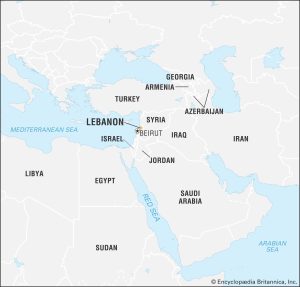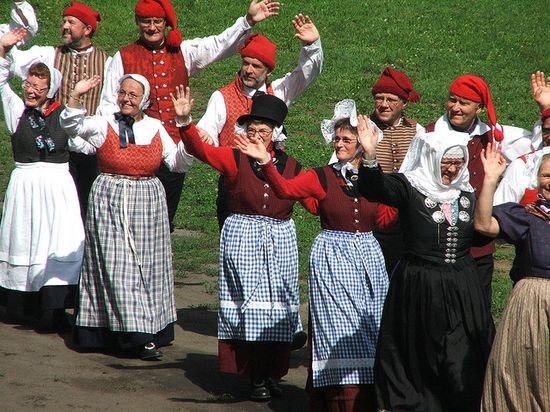History of Lebanon
Lebanon is a small country located in the Middle East, with a rich history that dates back to ancient times. Its strategic location at the crossroads of Asia, Africa, and Europe has made it a desirable territory for various empires throughout history.
Lebanon has been inhabited since prehistoric times, with evidence of human settlement dating back to the Paleolithic era. The Phoenicians, a seafaring people who established a powerful maritime empire in the eastern Mediterranean, are considered the first inhabitants of Lebanon. The Phoenicians founded many cities along the coast, including Tyre and Sidon, which became major centers of trade and commerce in the ancient world (Osborne, 2015).
Lebanon was also an important part of the Persian Empire, which ruled the region from the 6th to the 4th century BCE. The Persian Empire was followed by the Macedonian Empire, led by Alexander the Great, who conquered the region in 332 BCE. After Alexander’s death, his empire was divided among his generals, and Lebanon became part of the Seleucid Empire, which ruled the region until the Roman conquest in 64 BCE (Lewis, 2018).
During the Roman period, Lebanon became a prosperous province known as Phoenicia, and it was home to several important cities, including Beirut, which served as the capital of the province. The region was also an important center of early Christianity, with several of the apostles visiting and preaching in the area (Foss, 2016).
In the 7th century, Lebanon was conquered by the Arab armies of the Muslim Caliphate, which brought Islam to the region. Lebanon remained under Muslim rule for several centuries, and during this time, the region became a center of Islamic scholarship and learning. The Crusaders, a European Christian army, briefly occupied Lebanon in the 12th century but were eventually driven out by the Muslim armies (Hourani, 2013).
During the Ottoman period, Lebanon became part of the Ottoman Empire and remained under Ottoman rule until the end of World War I. The region was known as Mount Lebanon Province, and it was ruled by a local governor who was appointed by the Ottoman authorities. In the late 19th century, Lebanon became a center of Arab nationalism, and many Lebanese intellectuals and political leaders played important roles in the Arab nationalist movement (Khalaf, 2013).
After World War I, Lebanon became part of the French Mandate for Syria and Lebanon, and it remained under French rule until 1943, when it gained its independence. Since then, Lebanon has experienced a tumultuous history, including a long civil war that lasted from 1975 to 1990, several foreign invasions, and ongoing political instability (Barakat, 2018).
In conclusion, Lebanon’s history is long and complex, with many different civilizations and empires leaving their mark on the region. From the Phoenicians to the present day, Lebanon has been a center of trade, commerce, and culture, with a rich legacy that continues to shape the region today.

Location
Lebanon is a country located in the Middle East, bordered by Syria to the north and east, Israel to the south, and the Mediterranean Sea to the west. It is situated on the eastern shore of the Mediterranean, with a total area of approximately 10,452 square kilometers (Central Intelligence Agency, 2021). Lebanon’s location places it at a strategic crossroads between Europe, Asia, and Africa, making it an important cultural and commercial hub throughout history.
Lebanon’s location in the Middle East has influenced its history and culture. The country has been inhabited since prehistoric times, with evidence of human settlements dating back to the Stone Age (Najjar & Nasser, 2019). Throughout history, Lebanon has been ruled by various empires, including the Phoenician, Roman, Ottoman, and French empires. These influences have left their mark on Lebanon’s culture, architecture, and cuisine, which blend elements from various civilizations.
The location of Lebanon has also influenced its economy. The country has a favorable geographic location, with easy access to major sea and land routes. This has made it an important trading hub for centuries, with goods flowing through the country from Europe, Asia, and Africa (World Bank, 2021). However, Lebanon’s economy has also been impacted by its location in a region characterized by political instability, conflict, and wars, which have negatively affected its economic growth and development.
In conclusion, Lebanon is located in the Middle East, bordered by Syria, Israel, and the Mediterranean Sea. Its strategic location has influenced its history, culture, and economy. The country has been ruled by various empires throughout history, and its culture and cuisine reflect this diversity. Lebanon’s location has also made it an important trading hub, but its economy has been impacted by the region’s political instability and conflicts.

Climate
Lebanon has a Mediterranean climate with mild, rainy winters and hot, dry summers. The climate is influenced by the country’s location on the eastern coast of the Mediterranean Sea, as well as by the country’s topography, including mountains and valleys. According to the Köppen-Geiger climate classification system, Lebanon has a Csa climate, which is characterized by dry summers and mild, rainy winters (Kottek et al., 2006).
The summer season in Lebanon, which lasts from June to September, is characterized by high temperatures and low humidity. Average temperatures during this period range from 24°C to 32°C, with temperatures occasionally exceeding 35°C. The coastal regions are generally cooler than the inland areas, with average temperatures ranging from 24°C to 28°C. The hot and dry summer weather is caused by the presence of a high-pressure system over the eastern Mediterranean, which results in clear skies and little rainfall (Abdallah & El-Fadel, 2015).
During the winter season, which lasts from December to March, temperatures are cooler and rainfall is more frequent. Average temperatures during this period range from 12°C to 18°C. The coastal regions are generally milder, with average temperatures ranging from 15°C to 17°C. Rainfall is heaviest during the winter season, with an average of 800mm of rainfall per year. Snowfall is also common in the mountainous areas, with snow accumulation reaching up to 2 meters in some areas (Abdallah & El-Fadel, 2015).
The transitional seasons of spring and fall are characterized by mild temperatures and moderate rainfall. Average temperatures during these seasons range from 20°C to 24°C, with occasional heatwaves and rainfall events. Spring is typically the wettest season, with an average of 40% of the annual rainfall occurring during this period (Khalil, 2013).
The climate of Lebanon is also influenced by regional weather patterns, such as the North Atlantic Oscillation and the Mediterranean Oscillation. These weather patterns can affect the amount and timing of rainfall, as well as the intensity of heatwaves and cold spells (Alameddine et al., 2019).
In conclusion, Lebanon has a Mediterranean climate with mild, rainy winters and hot, dry summers. The country’s topography and location on the eastern coast of the Mediterranean Sea contribute to its unique climate. Understanding the climate of Lebanon is important for various sectors, including agriculture, tourism, and water management.

Languages
Lebanon is a small Middle Eastern country with a population of approximately 6 million people, and it is home to several languages. The country’s official language is Arabic, and it is the most widely spoken language in Lebanon. However, the country’s unique history and cultural diversity have led to the emergence of several other languages.
One of the languages spoken in Lebanon is French, which is a legacy of the country’s colonial past. Lebanon was under French rule from the end of World War I until 1943, and during this time, French became the language of government, education, and culture. Today, French is still widely spoken and taught in schools as a second language. (Hage, 2015)
Another language spoken in Lebanon is English, which is commonly used in business and higher education. English has become an important language in the country because of its status as a global language and its use in international trade and diplomacy. It is also a language that is widely taught in schools and universities. (Gharib, 2016)
In addition to Arabic, French, and English, there are several other languages spoken in Lebanon. These include Armenian, which is spoken by the Armenian community, and Syriac, which is spoken by the Assyrian community. There are also several dialects of Arabic spoken in Lebanon, including the Lebanese dialect, which is characterized by its distinctive pronunciation and vocabulary.
The diversity of languages in Lebanon reflects the country’s rich cultural heritage and history. The presence of multiple languages has also contributed to the country’s cosmopolitan identity and its ability to engage with the rest of the world.
In conclusion, Lebanon is a multilingual country where several languages are spoken, including Arabic, French, English, Armenian, and Syriac. The use of multiple languages in Lebanon reflects the country’s cultural and historical diversity and its ability to connect with the global community.




